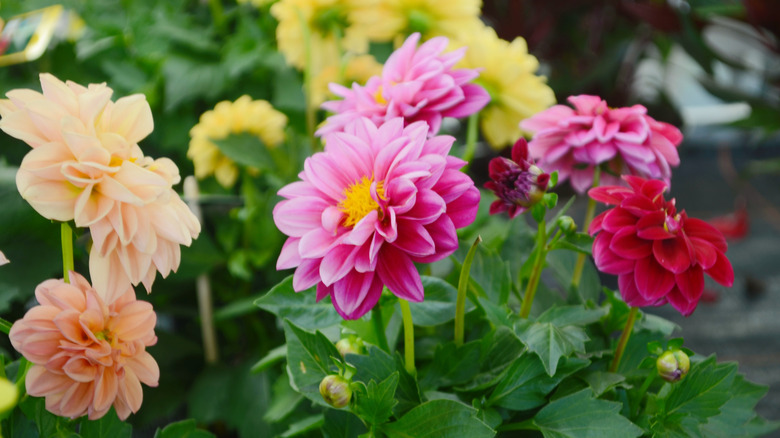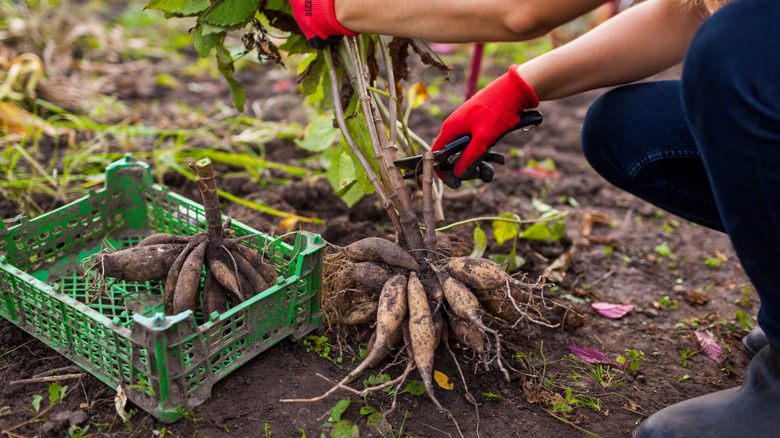The Worst Places To Grow Dahlias & Why You Should Avoid It At All Costs
Dahlias are known as easy-to-grow flowers, but knowing where to plant your dahlias can be especially important. Whether you're growing them in a container or planting them in the ground, there are certain areas you should avoid when it comes to growing dahlias. The worst spots for growing them include shallow pots, locations in maximum shade, anywhere with soggy soil, in hot or humid climates, and in crowded garden beds. These conditions can result in lower flower production as well as make them more susceptible to diseases. Consistent, prolonged stress can impact your dahlia's overall health, increasing the chances of small or even fewer, blooms with weak, limp stems.
Like other blooms, dahlias require specific conditions to thrive. Starting as tubers, or small starchy underground roots, dahlias can grow in a container or be planted directly into the ground like potatoes. While the tubers sit underneath the soil, they store energy for the following spring, eventually producing blooms in the midsummer to fall. Perfect for container gardens, garden beds, or as a border, dahlias come in an array of colors and sizes. Originating in Mexico, dahlias thrive as perennials in USDA hardiness zones 8-10. However, in colder zones like 3-7 they can grow as an annual that must be replanted each year. While there is a lot you need to know before planting your dahlias, finding the right balance in your garden can be the key to sustaining beautiful, color-rich blooms year after year
Conditions to avoid when growing dahlias
Growing your dahlias in an unsatisfactory environment can ultimately result in an unhealthy plant. For starters, when confined to a too-small pot, dahlias can struggle to develop their root system. That's why experts recommend planting dahlias in a container at least 12 inches wide, and just as deep, to accommodate their growth. Or, for ground planting, plant most dahlias at least 12 to 18 inches apart, preferably 18 inches, so they have ample growing room. Crowding them too close together can reduce airflow, creating pockets of stale, humid air that can cause powdery mildew and make it easier for pests to spread.
Another thing to consider is that dahlias prefer full sun to only partial shade, with a minimum of half a day of direct sunlight. They are also not tolerant of waterlogged soil and need adequate drainage, or they can succumb to root rot. The best approach is to use deep, infrequent watering, only giving your plants a drink when the topsoil is fully dry. Dahlias also won't flourish in super hot, humid weather. In fact, oppressive heat — over 90 degrees Fahrenheit — can weaken them, leading your dahlias to stall and even not bloom. Keeping them cool with a mist of water can help reduce their temperature and the surrounding air during periods of extreme weather.

